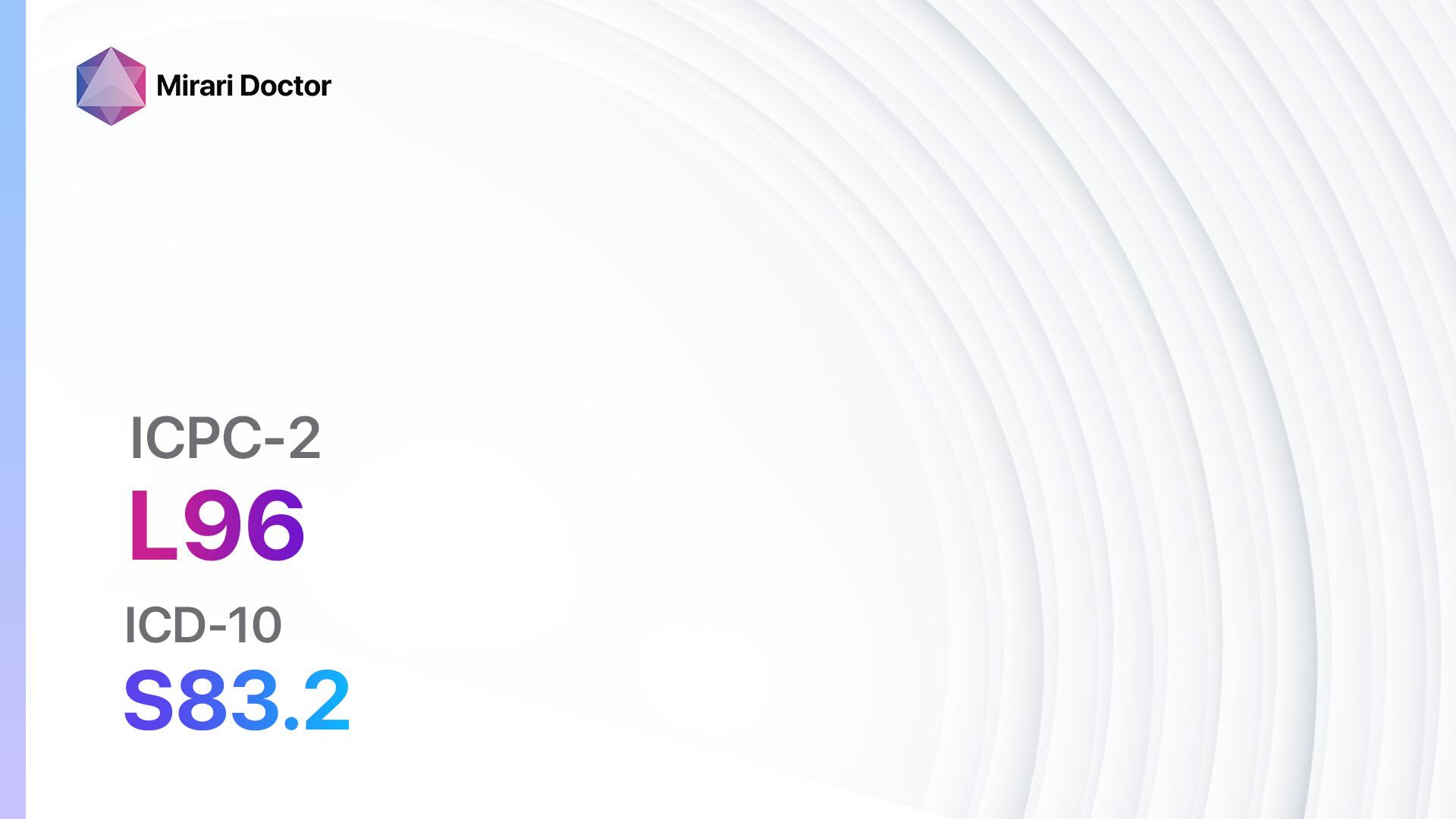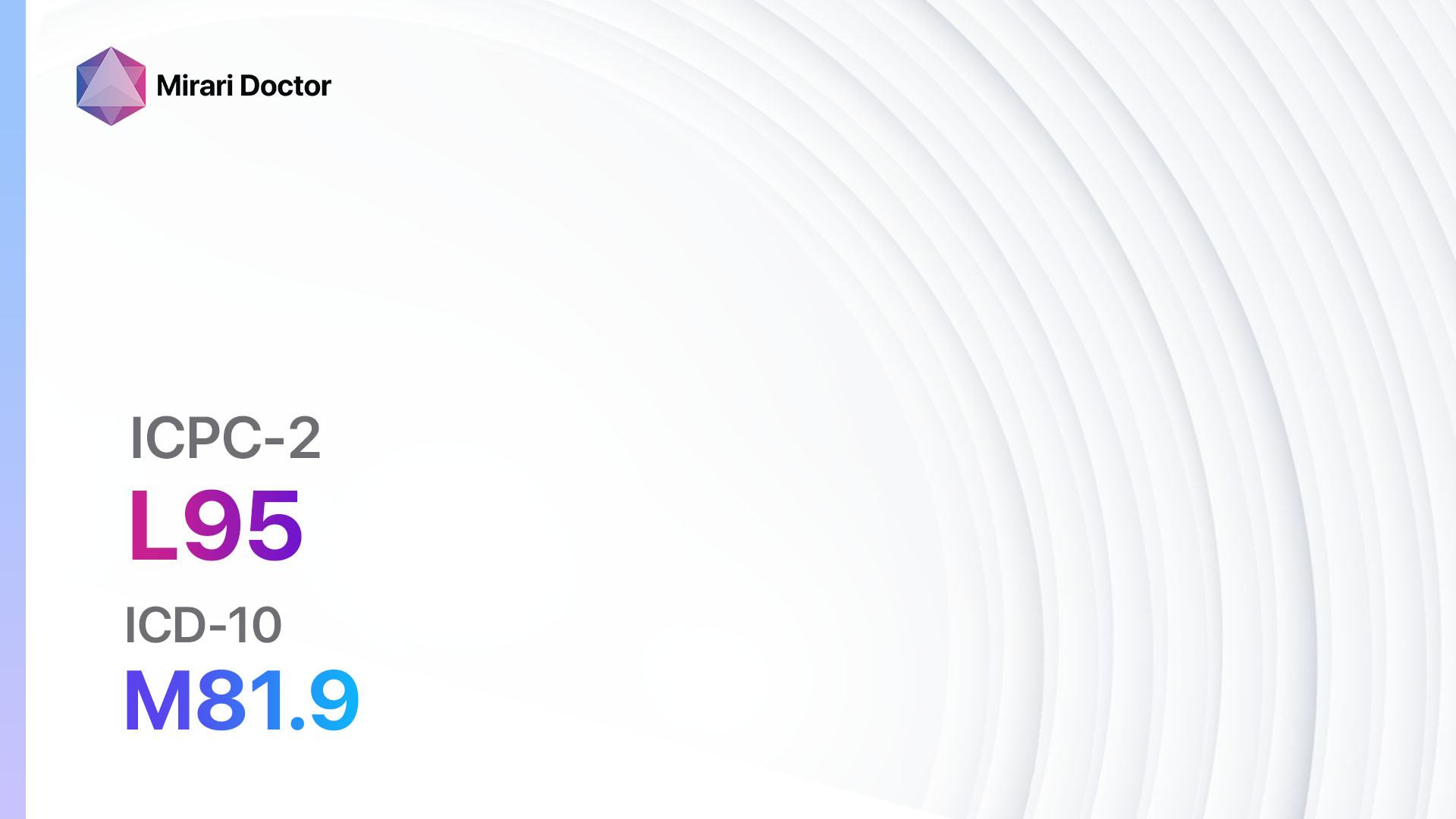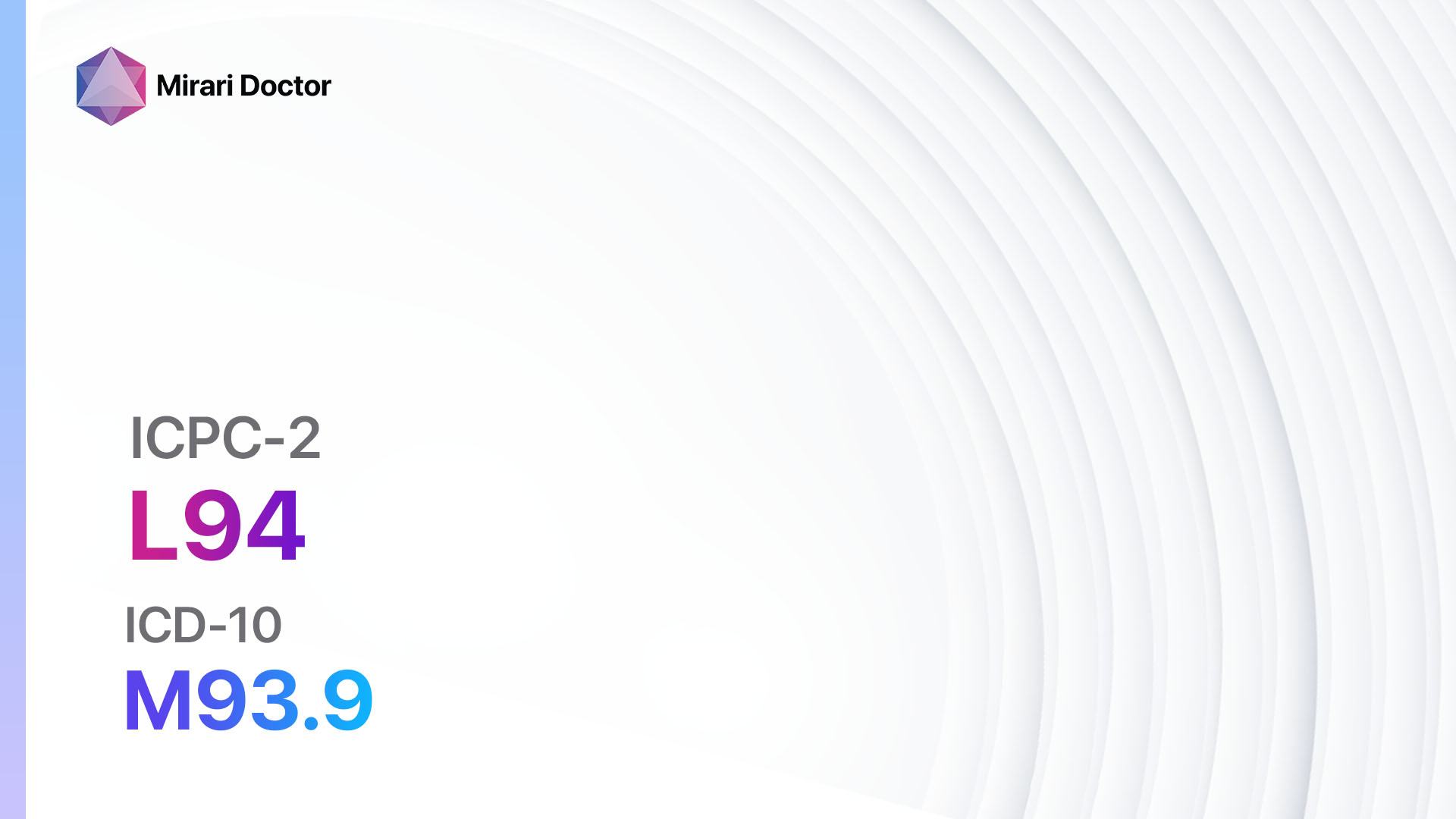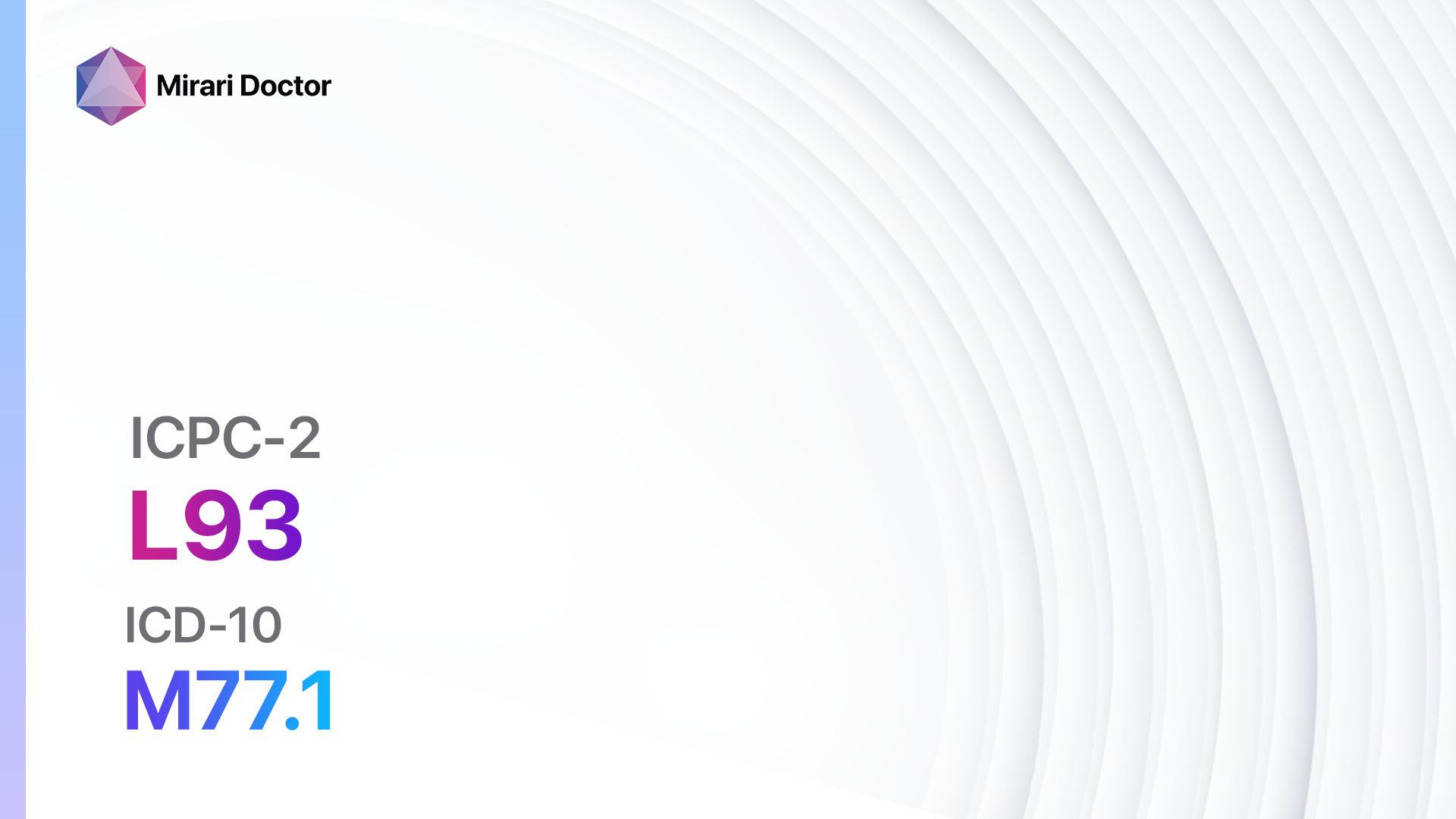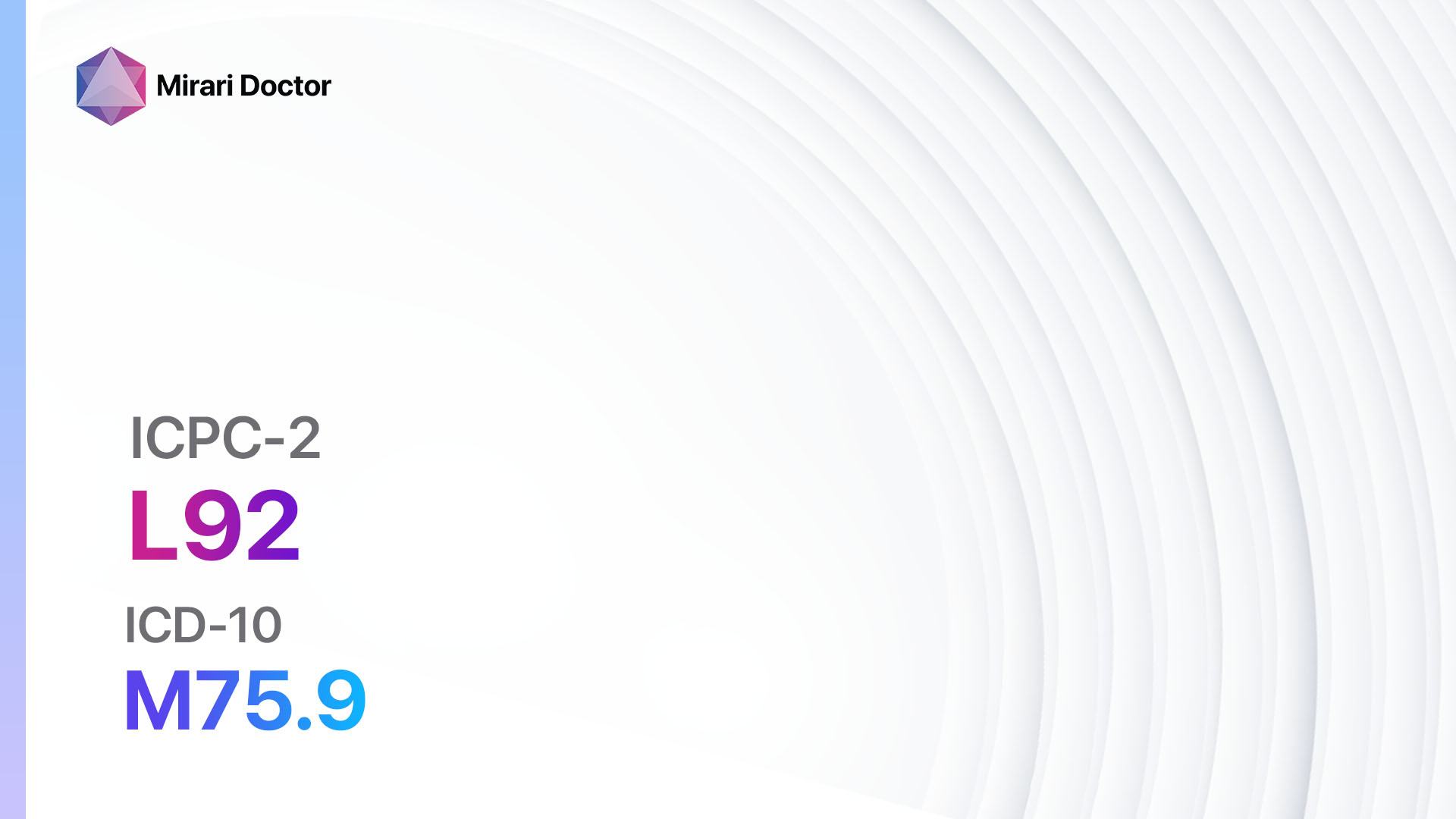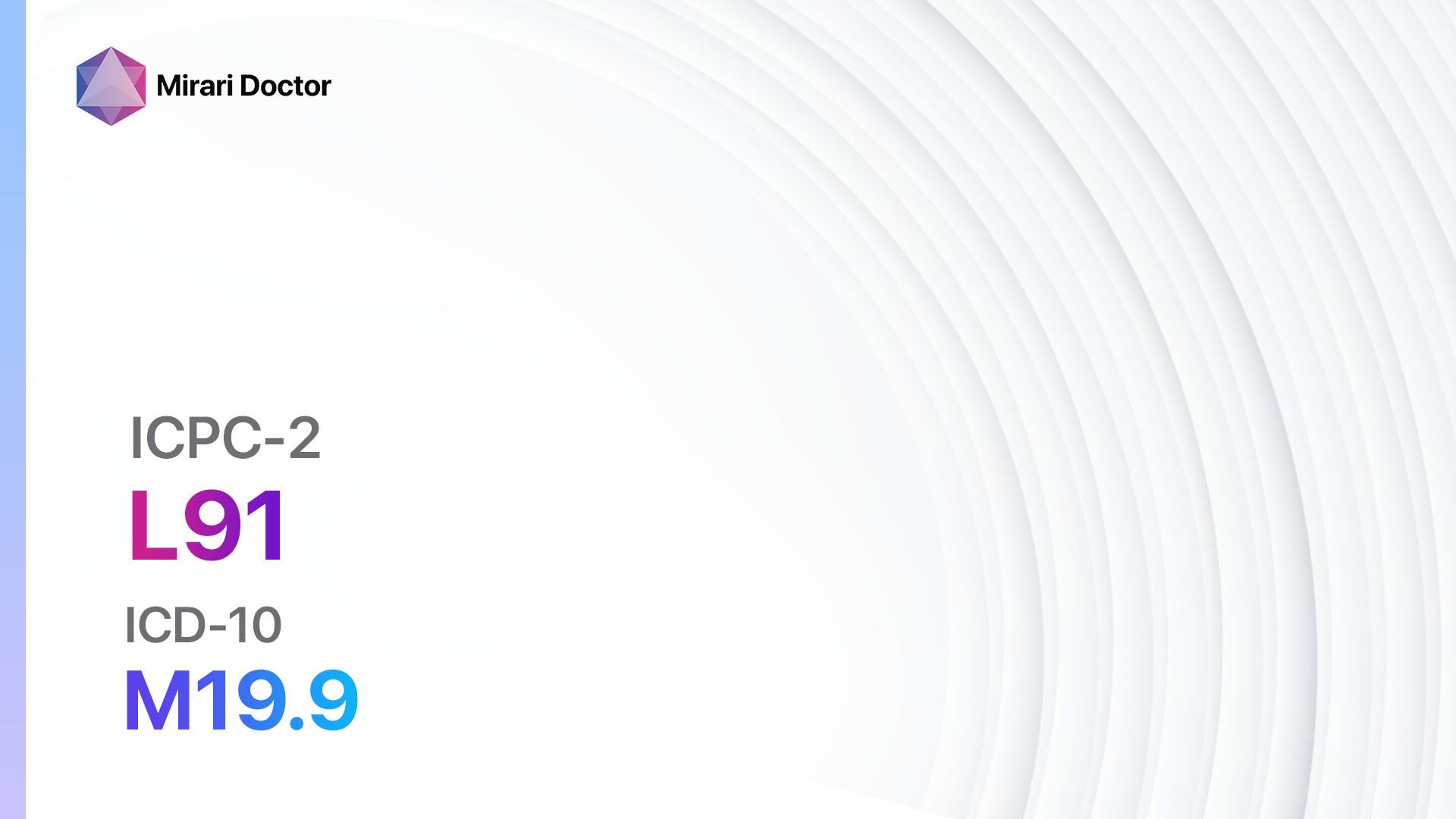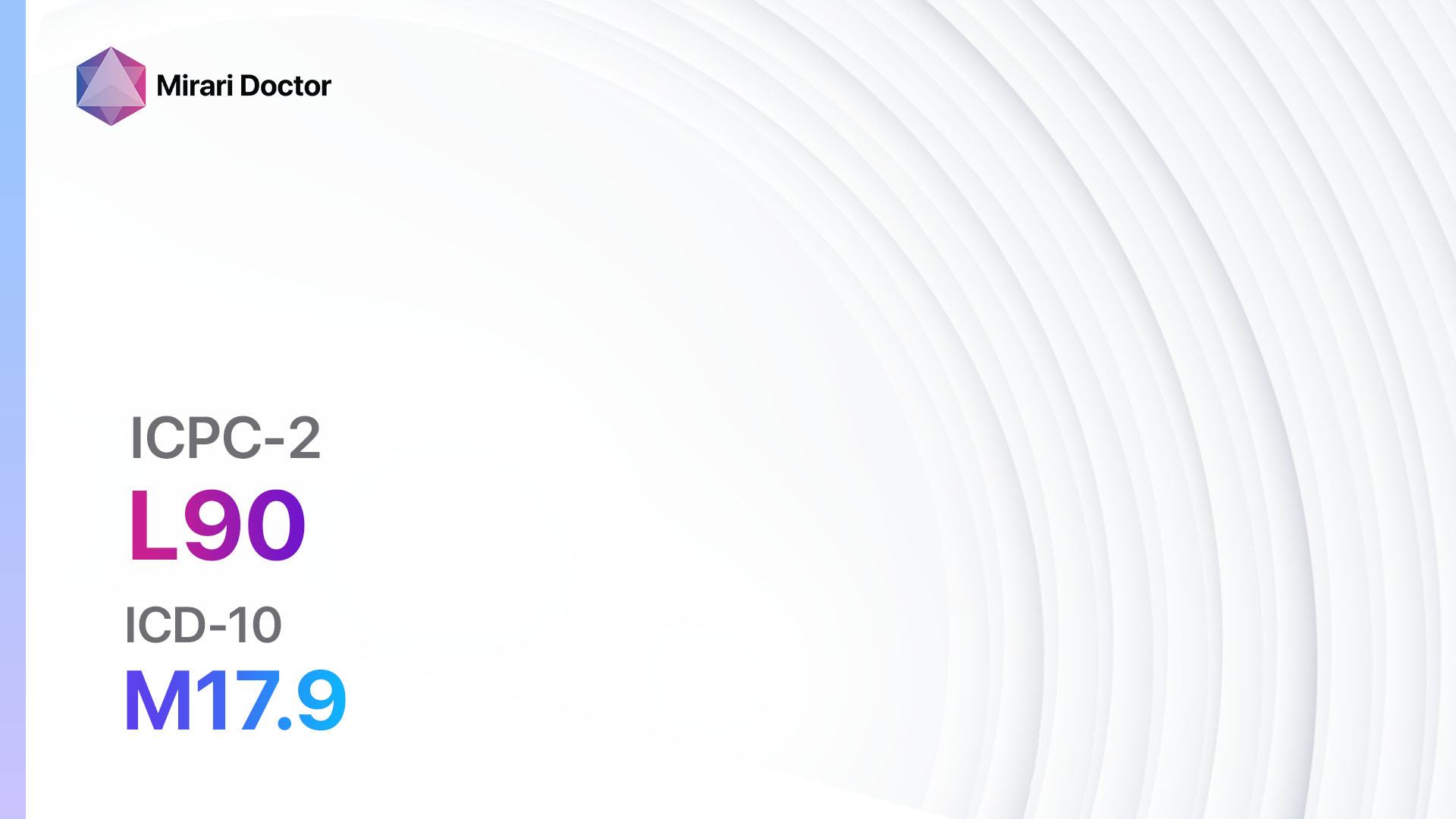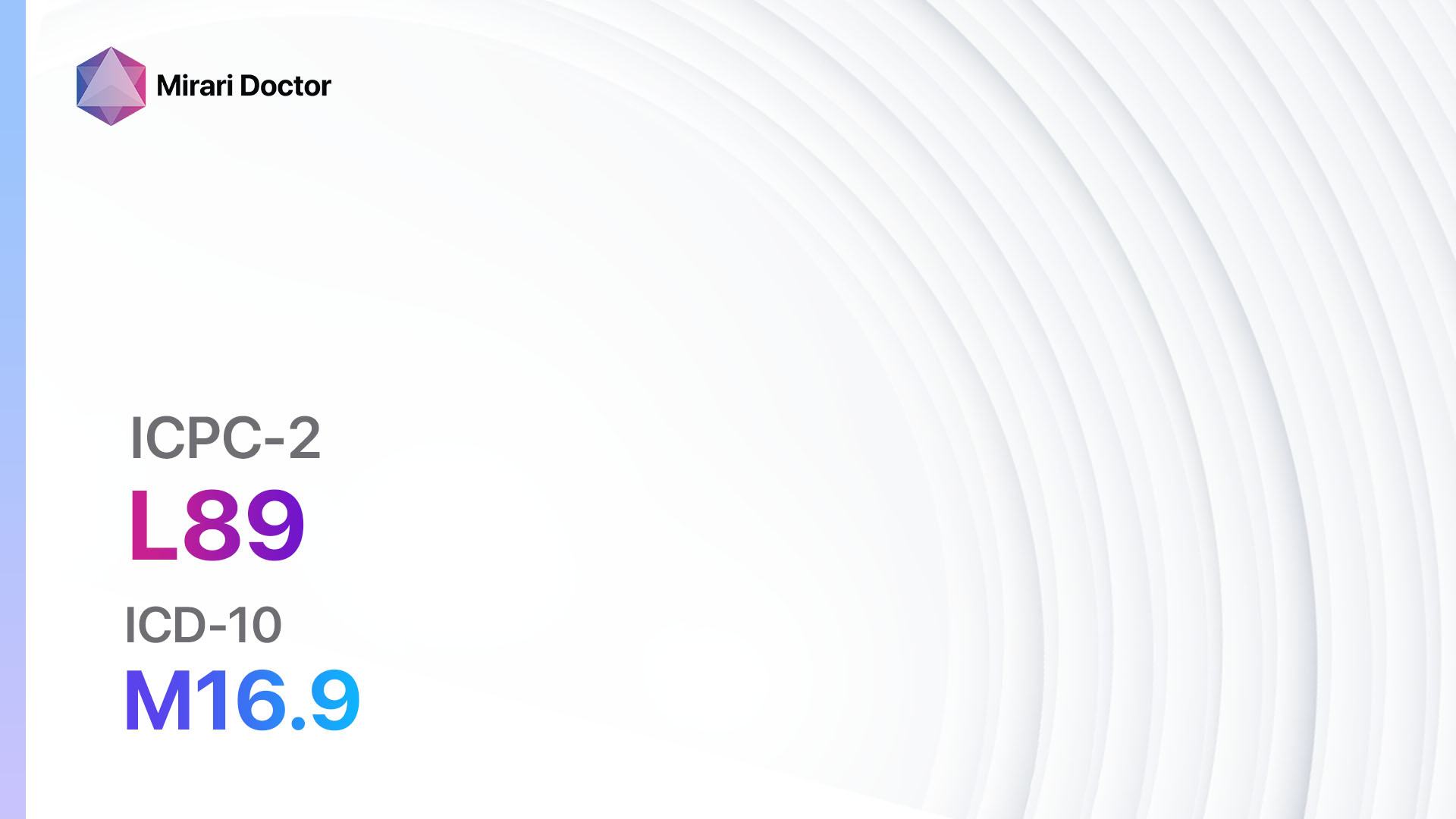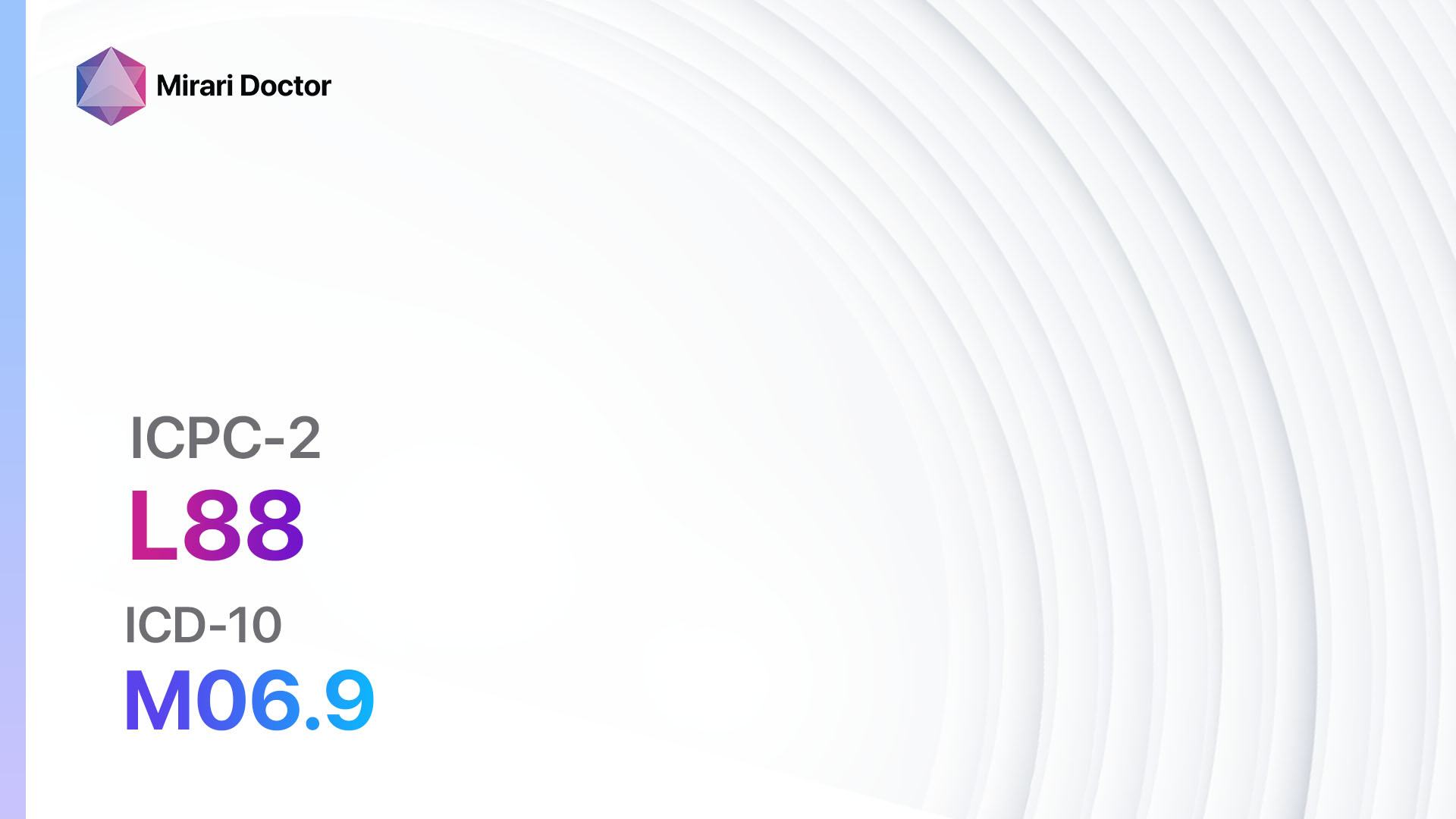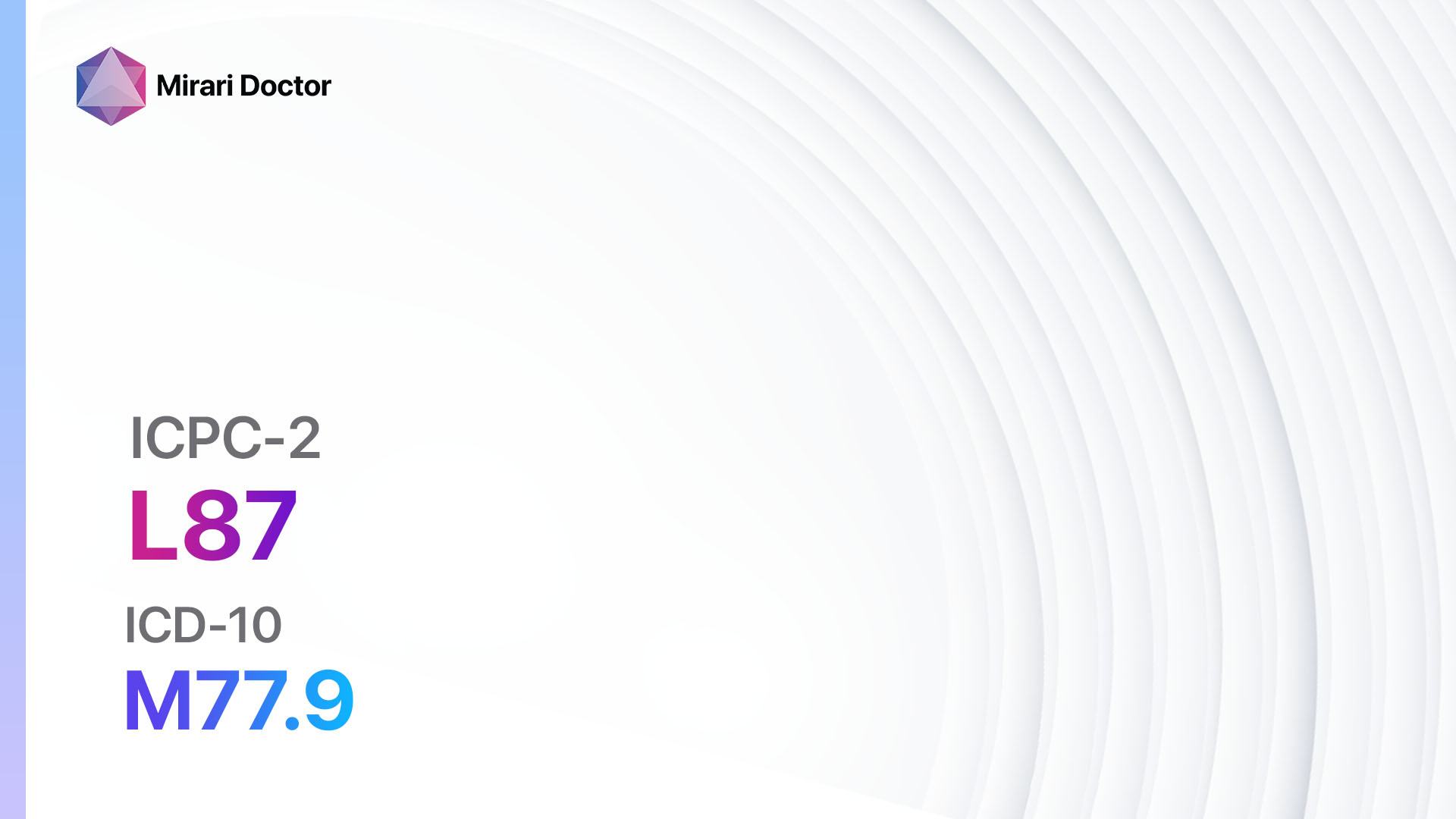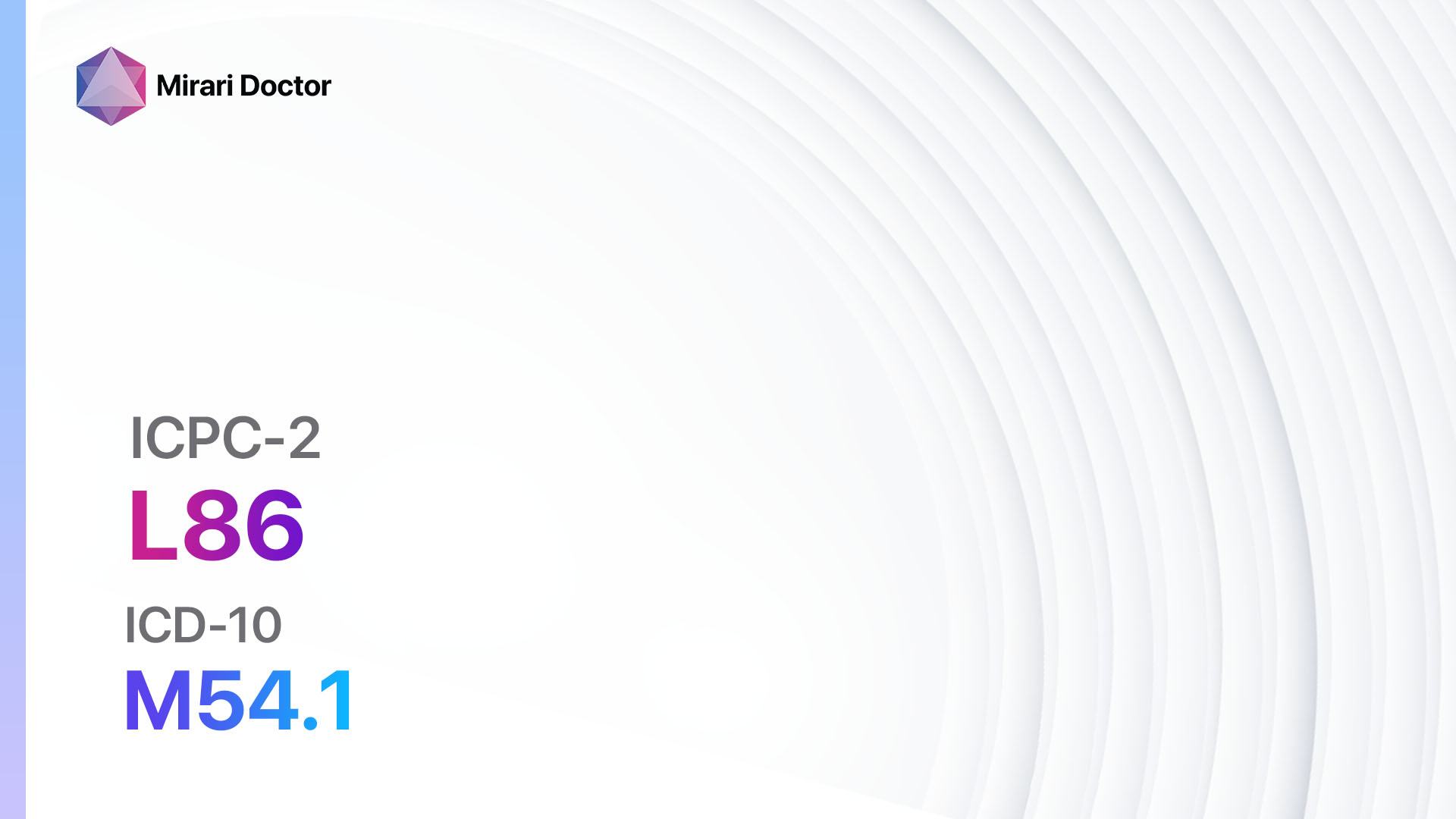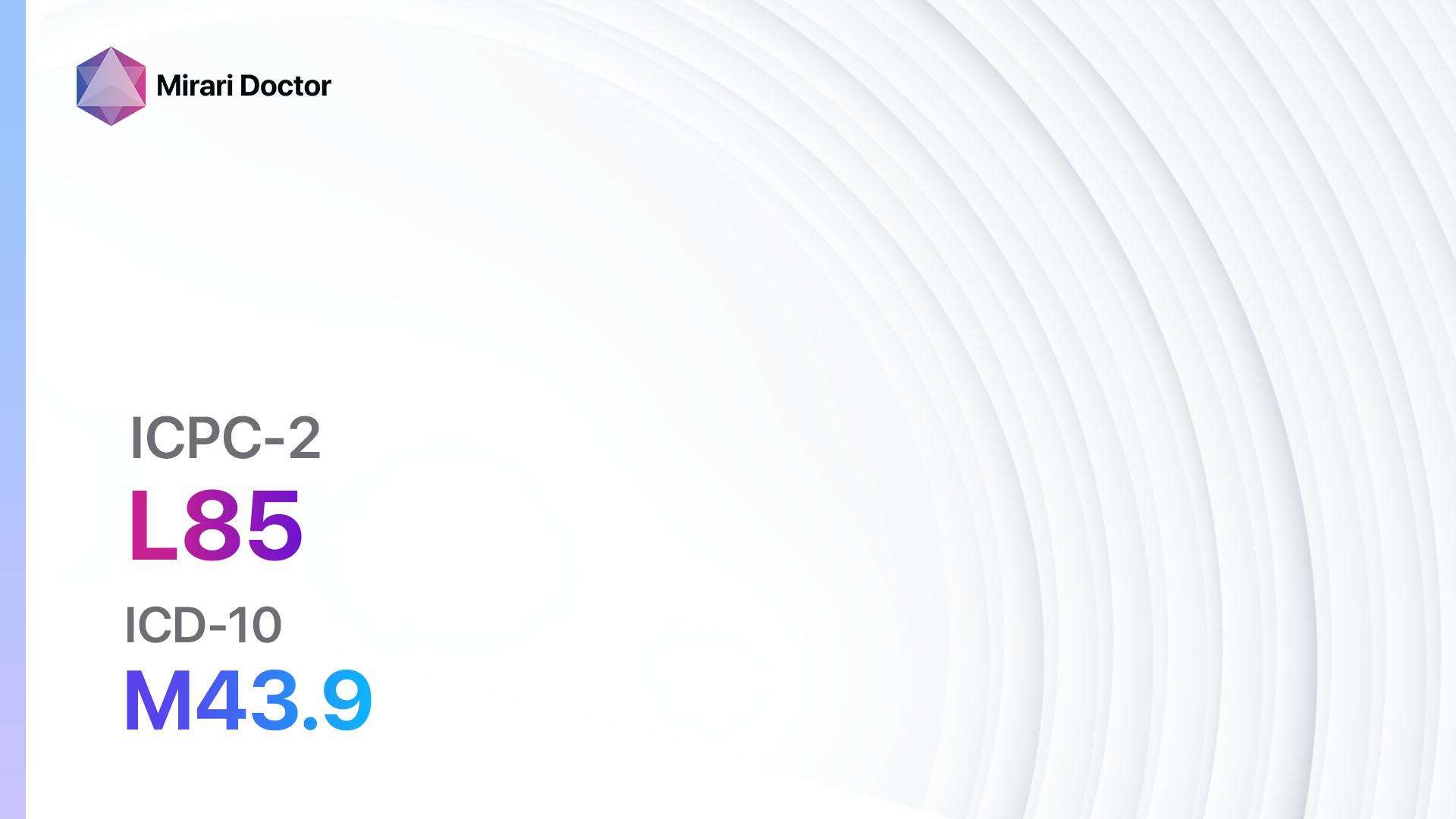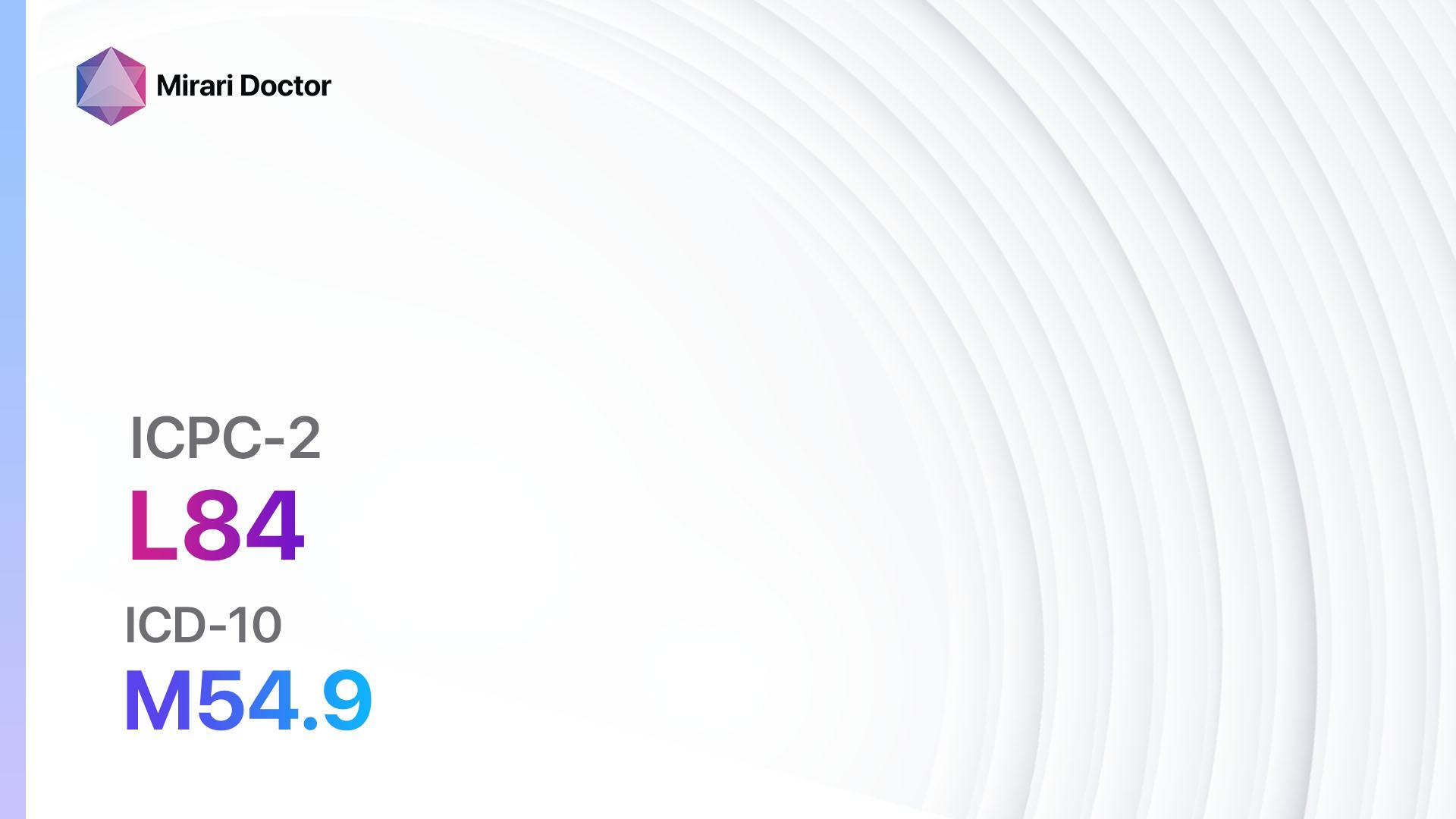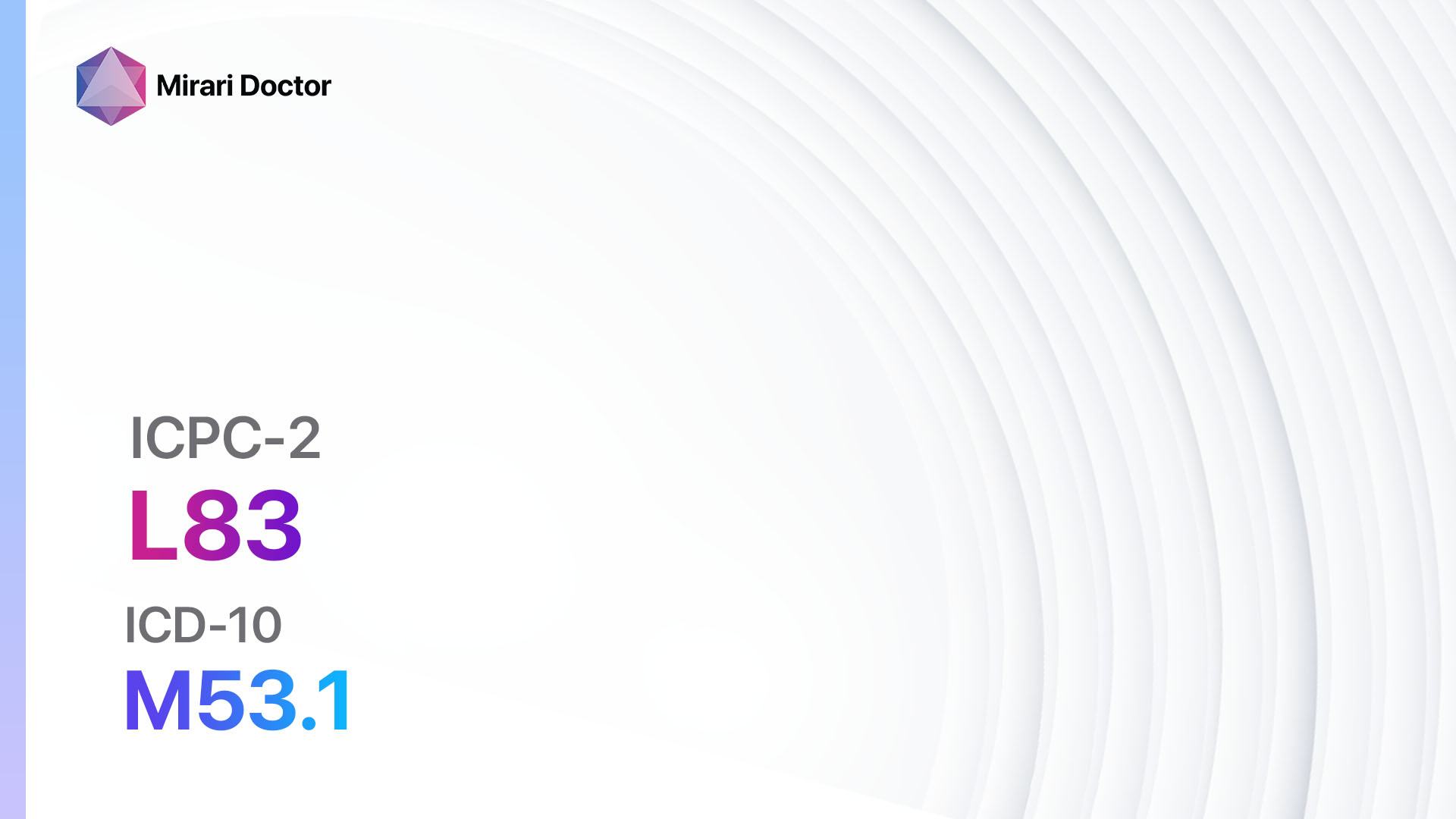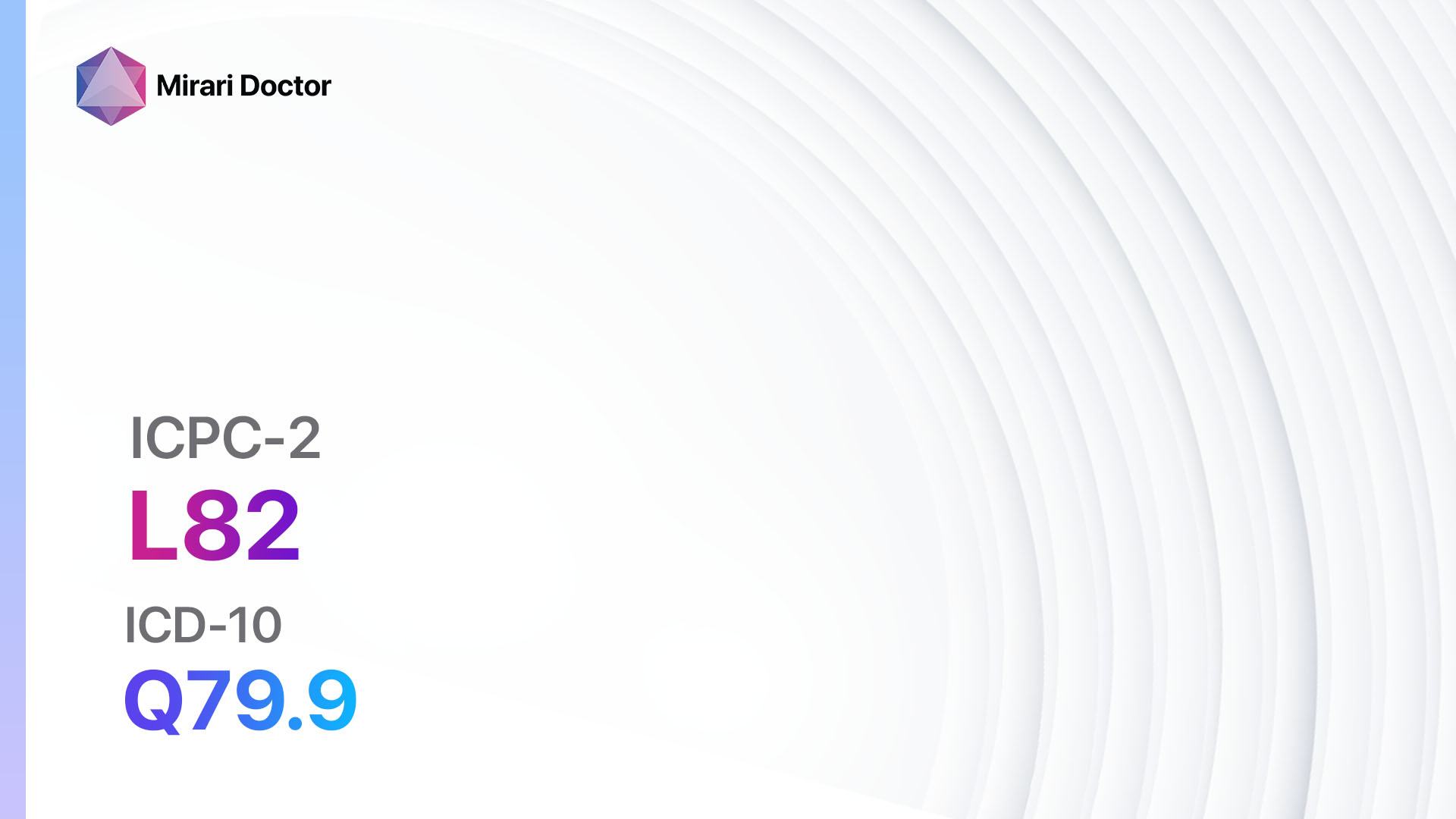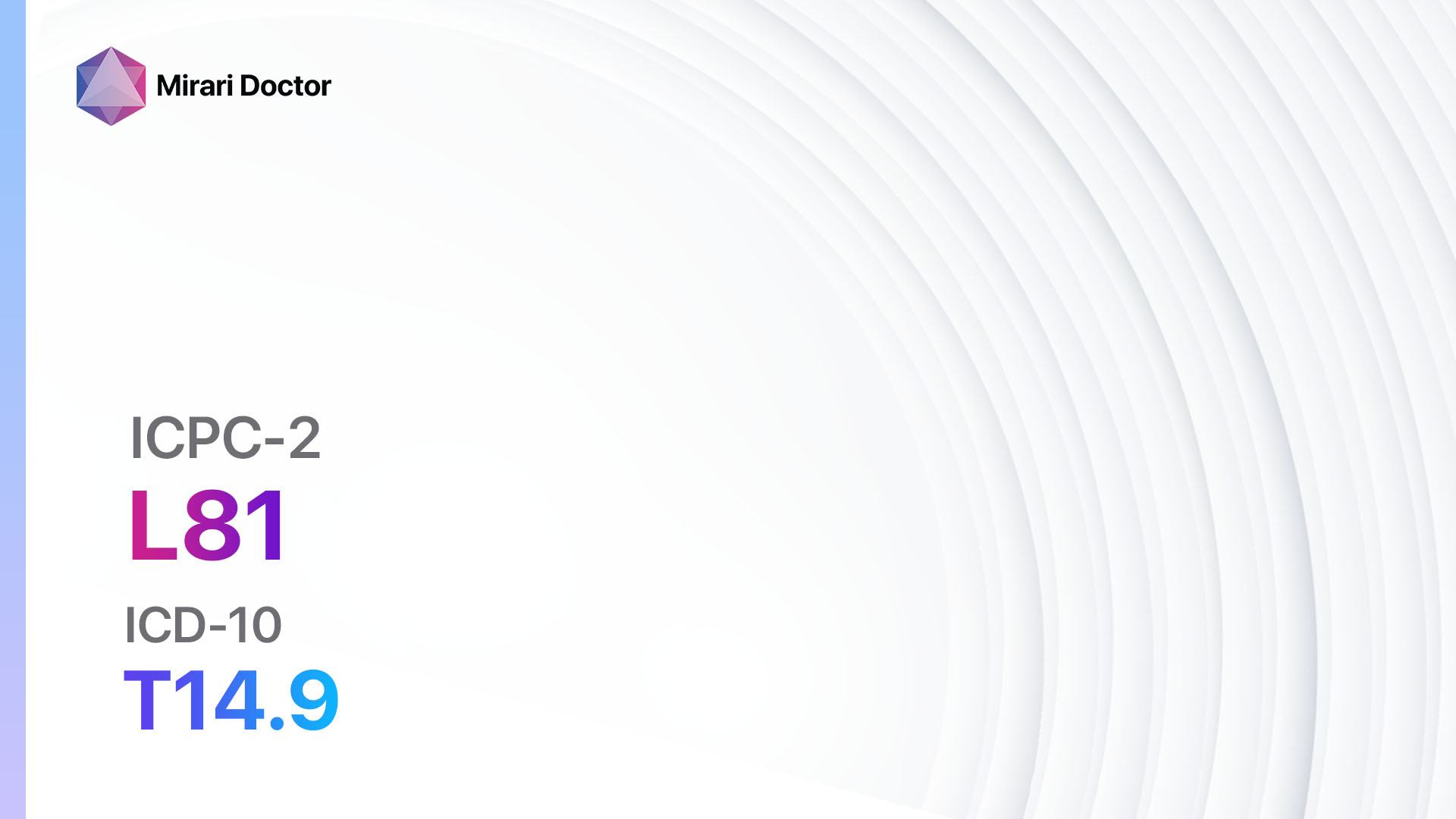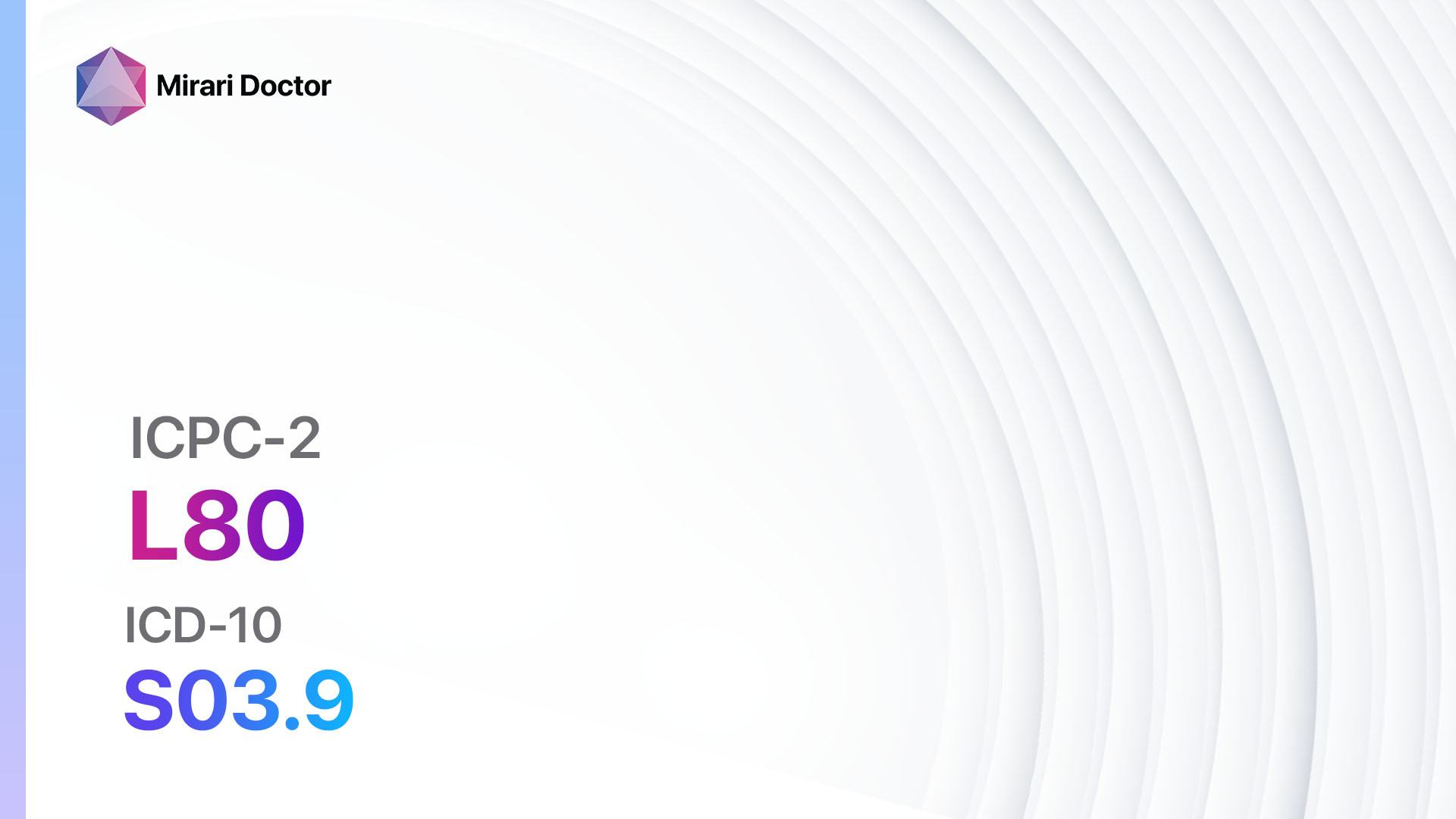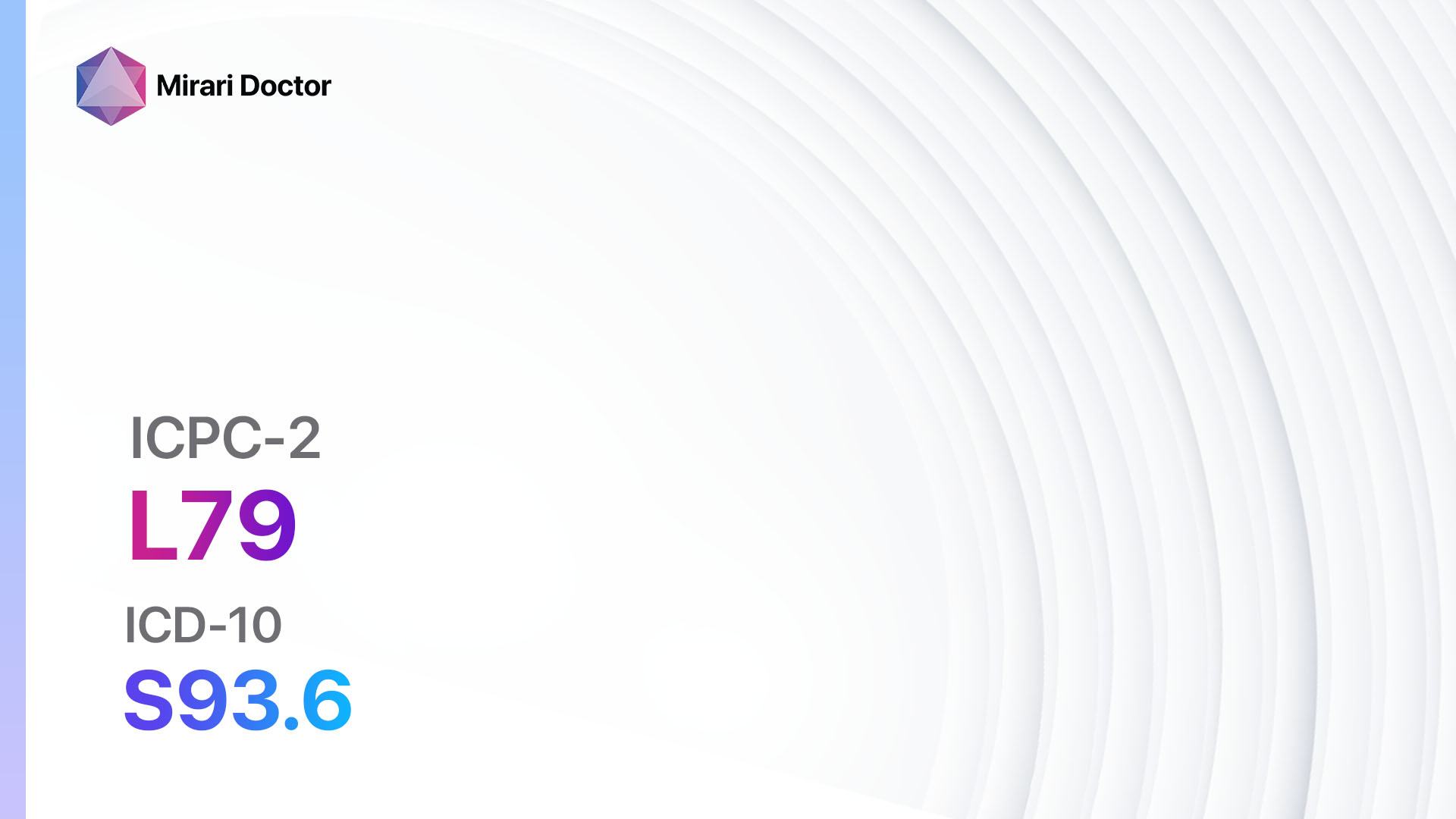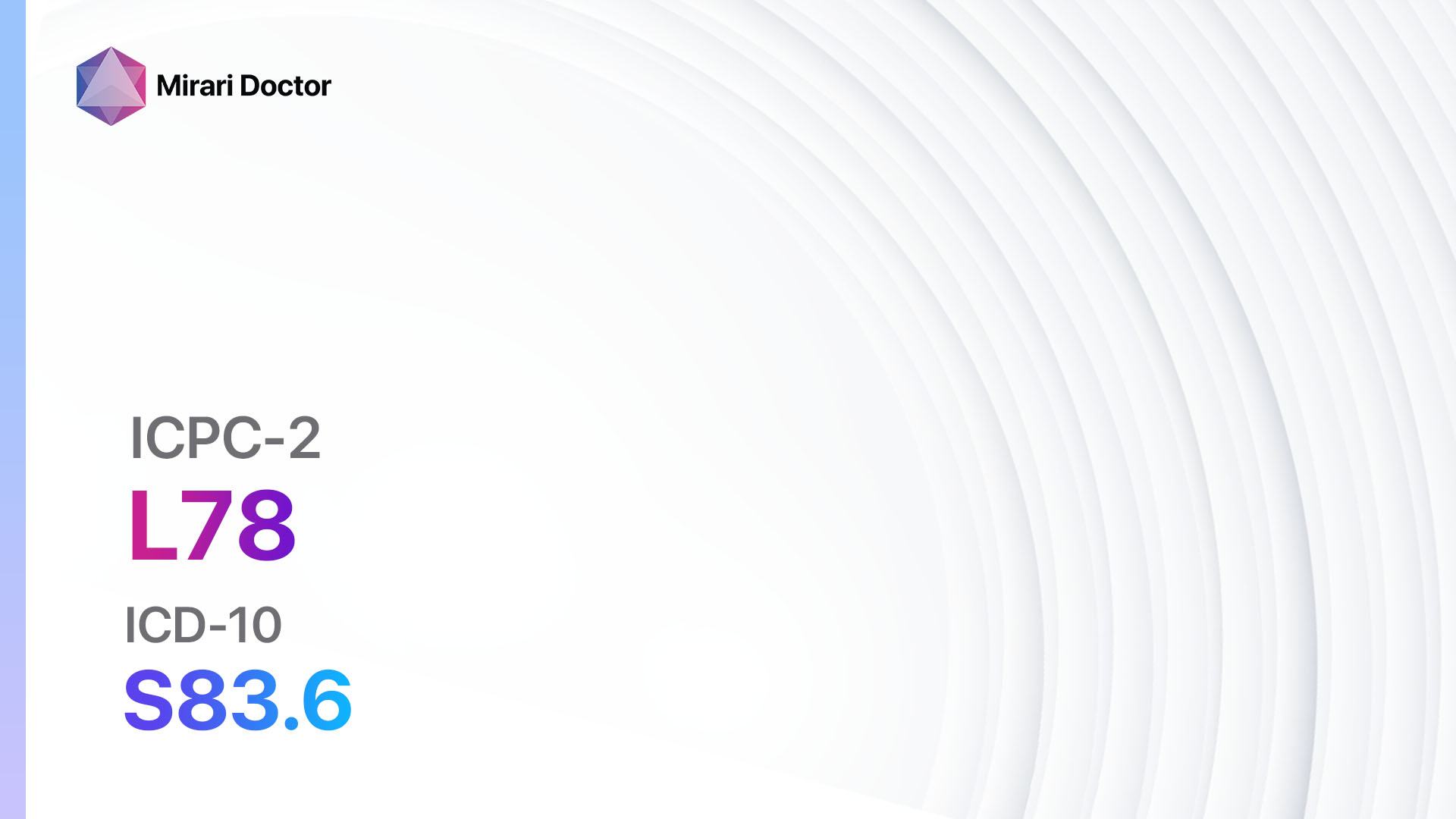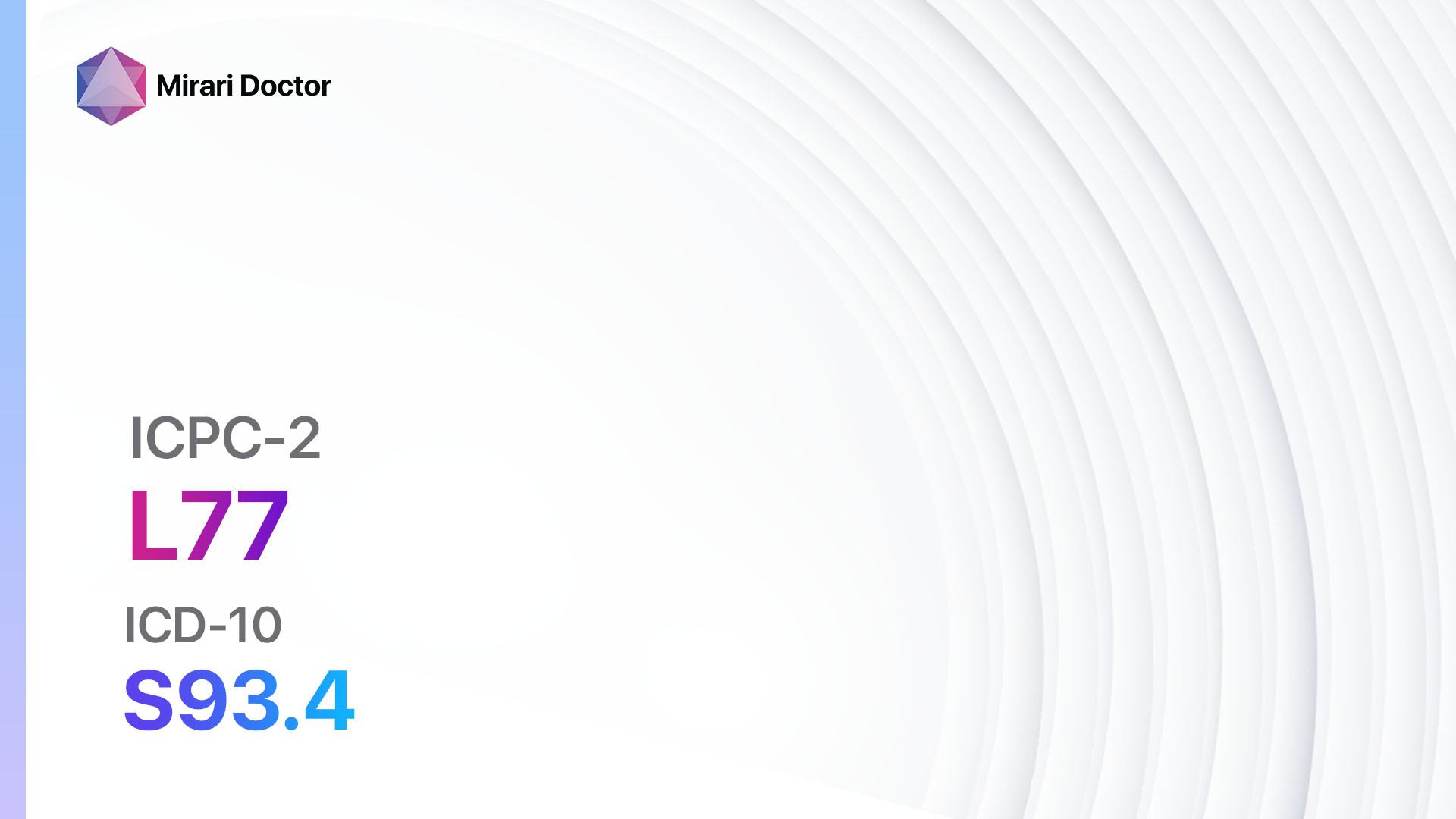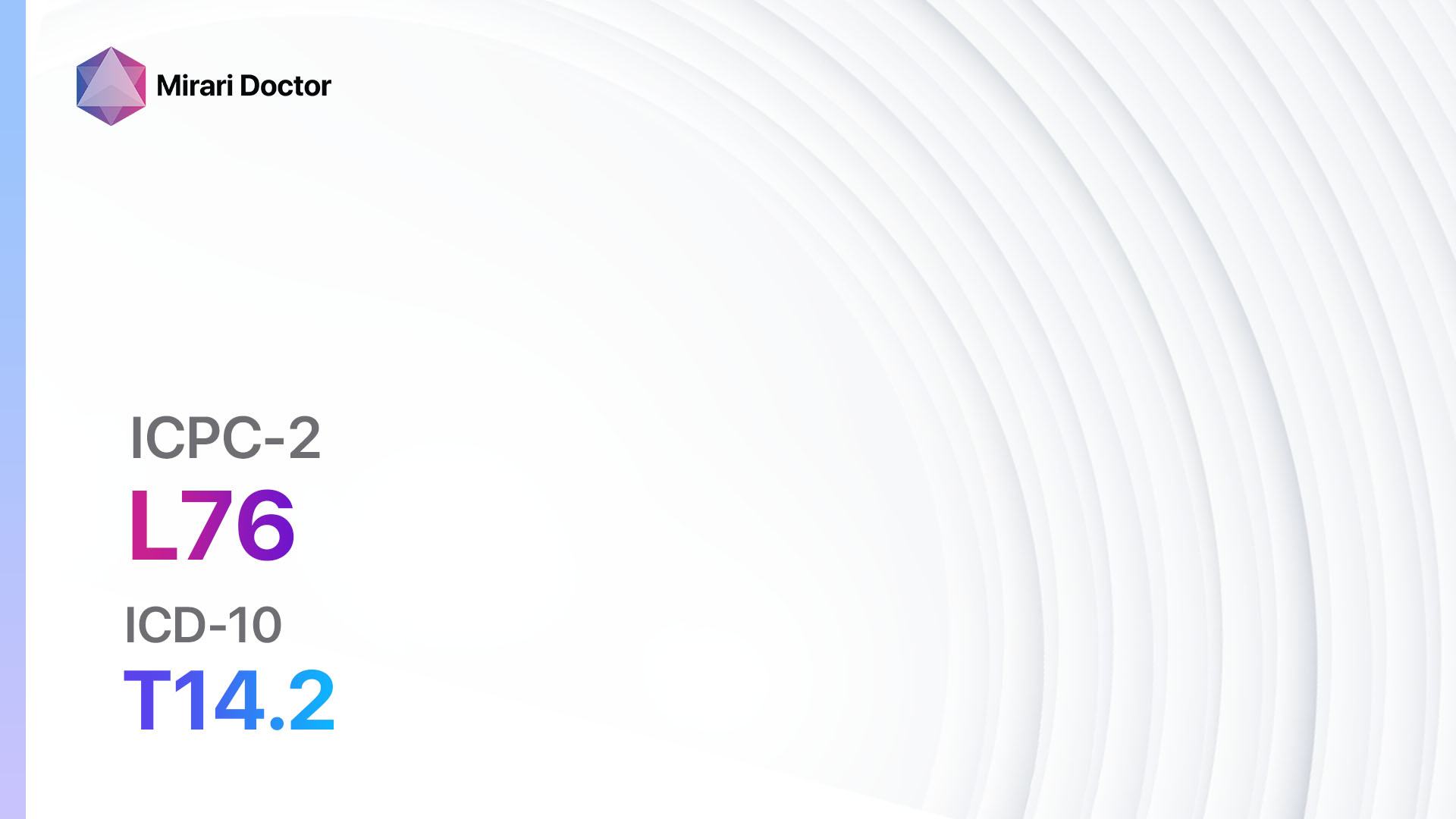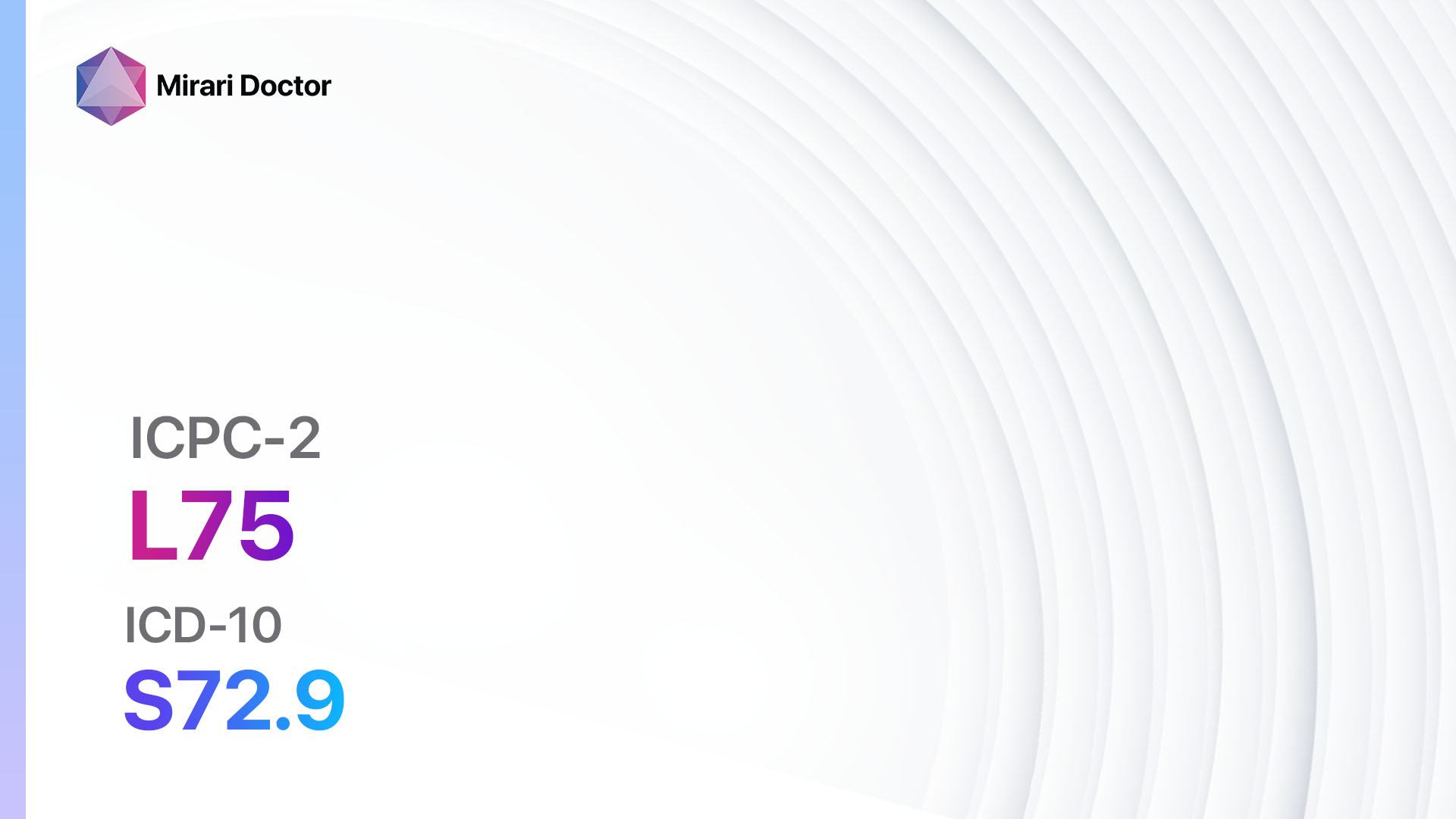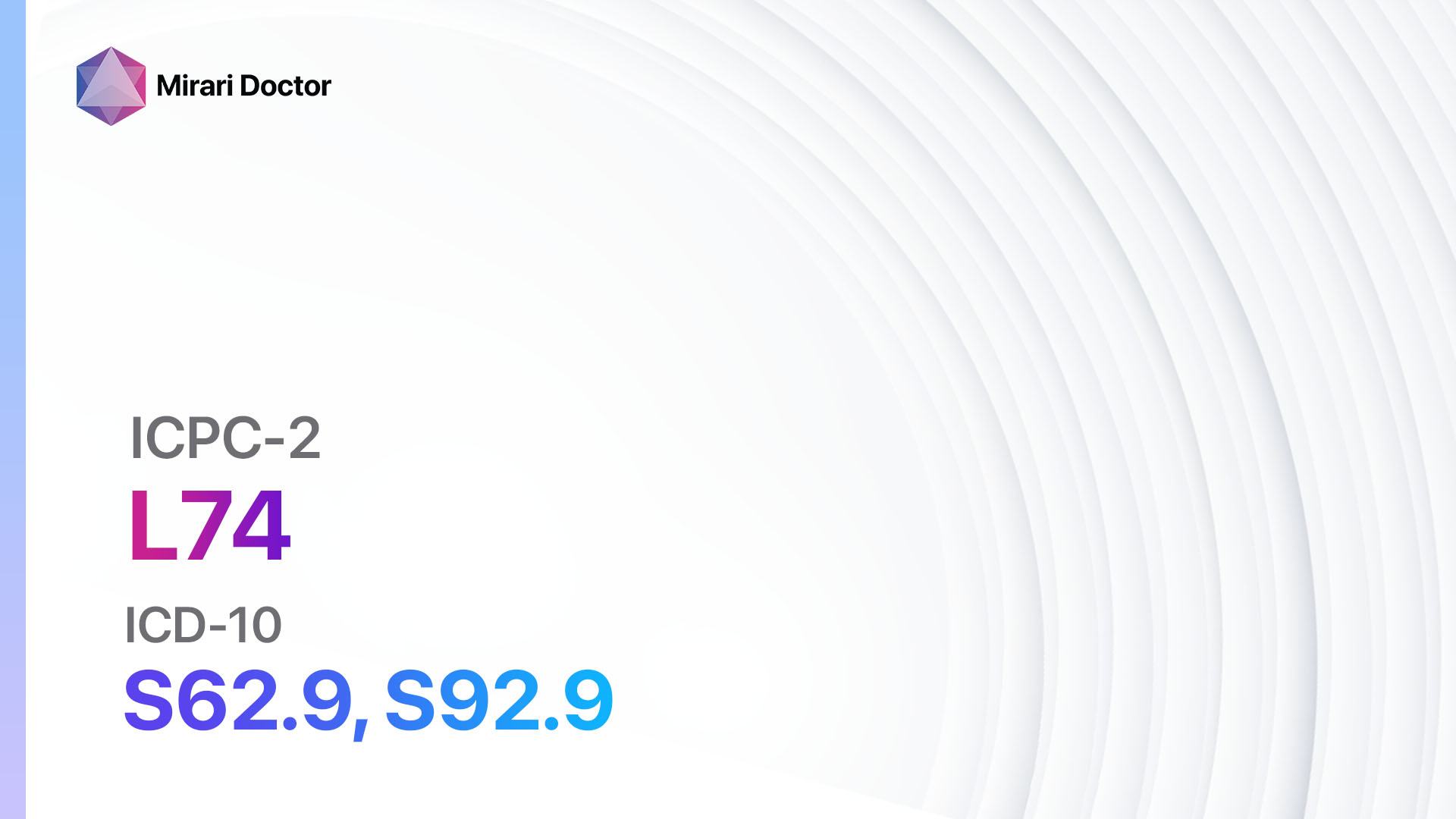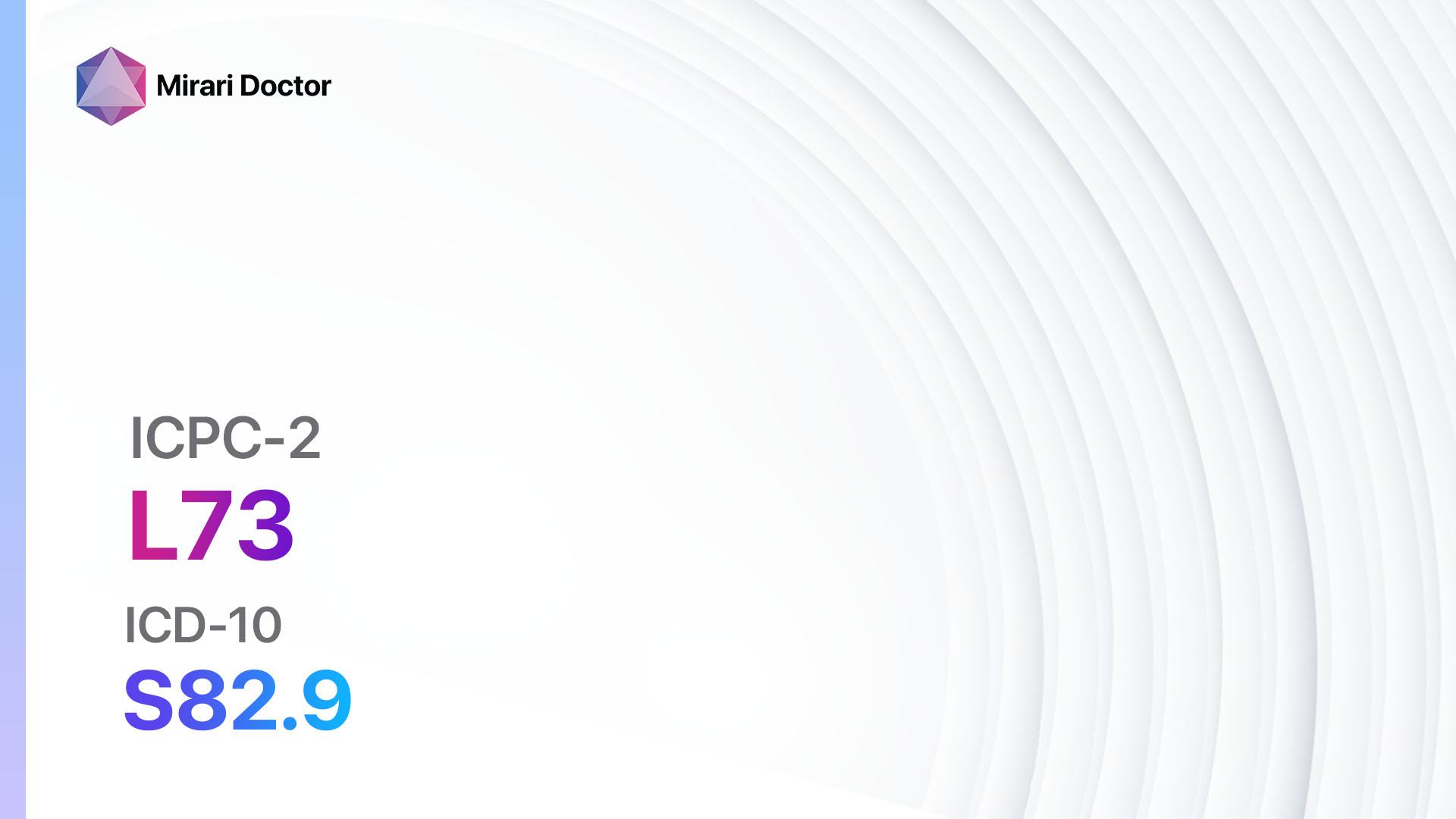
Introduction
Fracture of the tibia and fibula is a common orthopedic injury that can result from trauma, such as a fall or a direct blow to the leg[1][2]. This guide aims to provide a comprehensive overview of the diagnosis and management of tibia/fibula fractures.
Codes
Symptoms
- Severe pain in the affected leg[5]
- Swelling and bruising around the fracture site[6]
- Inability to bear weight on the affected leg[7]
- Deformity or angulation of the leg[8]
- Limited range of motion in the ankle or knee joint[9]
Causes
- Trauma, such as a fall or a direct blow to the leg[1][2]
- Sports injuries, such as a tackle or a collision[10]
- Motor vehicle accidents
- Osteoporosis or other bone diseases that weaken the bones
Diagnostic Steps
Medical History
- Gather information about the mechanism of injury, including the force and direction of impact
- Assess for any previous fractures or bone-related conditions
- Evaluate the patient’s overall health status, including any underlying medical conditions or medications that may affect bone health
Physical Examination
- Inspect the affected leg for swelling, bruising, or deformity
- Palpate the leg to identify the exact location of tenderness or pain
- Assess the range of motion in the ankle and knee joints
- Perform a neurovascular examination to ensure adequate blood flow and nerve function in the leg
Laboratory Tests
- Complete blood count (CBC) to assess for any signs of infection or anemia
- Blood chemistry panel to evaluate kidney and liver function
- Coagulation studies to assess the patient’s ability to form blood clots
Diagnostic Imaging
- X-rays of the leg to visualize the fracture and assess its severity
- CT scan or MRI may be necessary in complex fractures or to evaluate soft tissue involvement
Other Tests
- Bone density scan (DEXA scan) to assess bone mineral density and screen for osteoporosis
- Arterial or venous Doppler ultrasound to evaluate blood flow in the leg
- Nerve conduction studies or electromyography (EMG) to assess nerve function in the leg
Follow-up and Patient Education
- Schedule regular follow-up appointments to monitor healing progress and address any concerns or complications
- Provide patient education on proper immobilization techniques, weight-bearing restrictions, and rehabilitation exercises
- Discuss the importance of adherence to treatment plans and any necessary lifestyle modifications to promote bone health
Possible Interventions
Traditional Interventions
Medications:
Top 5 drugs for Fracture: tibia/fibula:
- Acetaminophen (e.g., Tylenol):
- Cost: $5-$15 for a bottle of 100 tablets.
- Contraindications: Allergy to acetaminophen.
- Side effects: Rare, but can include liver damage with high doses.
- Severe side effects: Allergic reactions, liver failure.
- Drug interactions: Alcohol, other medications containing acetaminophen.
- Warning: Do not exceed the recommended dosage.
- Nonsteroidal anti-inflammatory drugs (NSAIDs) (e.g., Ibuprofen, Naproxen):
- Cost: $5-$20 for a bottle of 100 tablets.
- Contraindications: Active peptic ulcer disease, history of gastrointestinal bleeding.
- Side effects: Upset stomach, heartburn.
- Severe side effects: Gastrointestinal bleeding, kidney damage.
- Drug interactions: Anticoagulants, other NSAIDs.
- Warning: Long-term use may increase the risk of cardiovascular events.
- Opioids (e.g., Oxycodone, Hydrocodone):
- Cost: Varies depending on the specific medication and dosage.
- Contraindications: Allergy to opioids, respiratory depression.
- Side effects: Constipation, drowsiness.
- Severe side effects: Respiratory depression, addiction.
- Drug interactions: Sedatives, alcohol.
- Warning: Use with caution and under close supervision due to the risk of addiction.
- Muscle relaxants (e.g., Cyclobenzaprine, Methocarbamol):
- Cost: $10-$30 for a bottle of 30 tablets.
- Contraindications: Allergy to muscle relaxants, history of liver disease.
- Side effects: Drowsiness, dry mouth.
- Severe side effects: Severe allergic reactions, liver toxicity.
- Drug interactions: Sedatives, alcohol.
- Warning: May cause drowsiness, avoid driving or operating machinery.
- Anticoagulants (e.g., Heparin, Warfarin):
- Cost: Varies depending on the specific medication and dosage.
- Contraindications: Active bleeding, history of heparin-induced thrombocytopenia.
- Side effects: Increased risk of bleeding.
- Severe side effects: Major bleeding, allergic reactions.
- Drug interactions: Other anticoagulants, antiplatelet agents.
- Warning: Regular monitoring of blood clotting parameters is required.
Alternative Drugs:
- Gabapentin: Used for neuropathic pain associated with fractures.
- Bisphosphonates: Medications that help strengthen bones and reduce the risk of fractures.
- Calcium and vitamin D supplements: Essential for bone health and fracture healing.
- Antibiotics: May be necessary if there is an associated open fracture or infection.
Surgical Procedures:
- Closed reduction and casting: Manipulation of the fracture fragments into alignment followed by immobilization with a cast.
- Open reduction and internal fixation (ORIF): Surgical placement of plates, screws, or rods to stabilize the fracture fragments.
- Intramedullary nailing: Insertion of a metal rod into the medullary canal of the bone to stabilize the fracture.
- External fixation: Use of pins or screws placed into the bone and connected to an external frame to stabilize the fracture.
Alternative Interventions
- Physical therapy: Helps improve range of motion, strength, and function of the affected leg. Cost: $50-$150 per session.
- Acupuncture: May help reduce pain and promote healing. Cost: $60-$120 per session.
- Low-level laser therapy: Uses low-intensity lasers to stimulate tissue repair and reduce pain. Cost: $50-$100 per session.
- Herbal supplements: Some herbs, such as Arnica and Comfrey, may have potential benefits for reducing inflammation and promoting healing. Cost: Varies depending on the specific supplement.
- Nutritional supplements: Certain nutrients, such as vitamin C, vitamin D, and calcium, are important for bone health and fracture healing. Cost: Varies depending on the specific supplement.
Lifestyle Interventions
- Rest and immobilization: Avoiding weight-bearing activities and using crutches or a walker as necessary.
- Physical activity modification: Gradually increasing weight-bearing activities and exercises under the guidance of a physical therapist.
- Healthy diet: Consuming a balanced diet rich in calcium, vitamin D, and other essential nutrients for bone health.
- Smoking cessation: Smoking can delay fracture healing and increase the risk of complications. Cost: Varies depending on the specific smoking cessation program.
- Weight management: Maintaining a healthy weight to reduce stress on the bones and joints. Cost: Varies depending on the specific weight management program.
It is important to note that the cost ranges provided are approximate and may vary depending on the location and availability of the interventions.
Mirari Cold Plasma Alternative Intervention
Understanding Mirari Cold Plasma
- Safe and Non-Invasive Treatment: Mirari Cold Plasma is a safe and non-invasive treatment option for various skin conditions. It does not require incisions, minimizing the risk of scarring, bleeding, or tissue damage.
- Efficient Extraction of Foreign Bodies: Mirari Cold Plasma facilitates the removal of foreign bodies from the skin by degrading and dissociating organic matter, allowing easier access and extraction.
- Pain Reduction and Comfort: Mirari Cold Plasma has a local analgesic effect, providing pain relief during the treatment, making it more comfortable for the patient.
- Reduced Risk of Infection: Mirari Cold Plasma has antimicrobial properties, effectively killing bacteria and reducing the risk of infection.
- Accelerated Healing and Minimal Scarring: Mirari Cold Plasma stimulates wound healing and tissue regeneration, reducing healing time and minimizing the formation of scars.
Mirari Cold Plasma Prescription
Video instructions for using Mirari Cold Plasma Device – L73 Fracture: tibia/fibula (ICD-10:S82.9)
| Mild | Moderate | Severe |
| Mode setting: 2 (Wound Healing) Location: 0 (Localized) Morning: 15 minutes, Evening: 15 minutes |
Mode setting: 2 (Wound Healing) Location: 0 (Localized) Morning: 30 minutes, Lunch: 30 minutes, Evening: 30 minutes |
Mode setting: 2 (Wound Healing) Location: 0 (Localized) Morning: 30 minutes, Lunch: 30 minutes, Evening: 30 minutes |
| Mode setting: 9 (Arthritis) Location: 0 (Localized) Morning: 15 minutes, Evening: 15 minutes |
Mode setting: 9 (Arthritis) Location: 0 (Localized) Morning: 30 minutes, Lunch: 30 minutes, Evening: 30 minutes |
Mode setting: 9 (Arthritis) Location: 0 (Localized) Morning: 30 minutes, Lunch: 30 minutes, Evening: 30 minutes |
| Mode setting: 9 (Arthritis) Location: 0 (Localized) Morning: 15 minutes, Evening: 15 minutes |
Mode setting: 9 (Arthritis) Location: 0 (Localized) Morning: 30 minutes, Lunch: 30 minutes, Evening: 30 minutes |
Mode setting: 9 (Arthritis) Location: 0 (Localized) Morning: 30 minutes, Lunch: 30 minutes, Evening: 30 minutes |
| Total Morning: 45 minutes approx. $7.50 USD, Evening: 45 minutes approx. $7.50 USD |
Total Morning: 90 minutes approx. $15 USD, Lunch: 90 minutes approx. $15 USD, Evening: 90 minutes approx. $15 USD, |
Total Morning: 90 minutes approx. $15 USD, Lunch: 90 minutes approx. $15 USD, Evening: 90 minutes approx. $15 USD, |
| Usual treatment for 7-60 days approx. $105 USD – $900 USD | Usual treatment for 6-8 weeks approx. $1,890 USD – $2,520 USD |
Usual treatment for 3-6 months approx. $4,050 USD – $8,100 USD
|
 |
|
Use the Mirari Cold Plasma device to treat Fracture: tibia/fibula effectively.
WARNING: MIRARI COLD PLASMA IS DESIGNED FOR THE HUMAN BODY WITHOUT ANY ARTIFICIAL OR THIRD PARTY PRODUCTS. USE OF OTHER PRODUCTS IN COMBINATION WITH MIRARI COLD PLASMA MAY CAUSE UNPREDICTABLE EFFECTS, HARM OR INJURY. PLEASE CONSULT A MEDICAL PROFESSIONAL BEFORE COMBINING ANY OTHER PRODUCTS WITH USE OF MIRARI.
Step 1: Cleanse the Skin
- Start by cleaning the affected area of the skin with a gentle cleanser or mild soap and water. Gently pat the area dry with a clean towel.
Step 2: Prepare the Mirari Cold Plasma device
- Ensure that the Mirari Cold Plasma device is fully charged or has fresh batteries as per the manufacturer’s instructions. Make sure the device is clean and in good working condition.
- Switch on the Mirari device using the power button or by following the specific instructions provided with the device.
- Some Mirari devices may have adjustable settings for intensity or treatment duration. Follow the manufacturer’s instructions to select the appropriate settings based on your needs and the recommended guidelines.
Step 3: Apply the Device
- Place the Mirari device in direct contact with the affected area of the skin. Gently glide or hold the device over the skin surface, ensuring even coverage of the area experiencing.
- Slowly move the Mirari device in a circular motion or follow a specific pattern as indicated in the user manual. This helps ensure thorough treatment coverage.
Step 4: Monitor and Assess:
- Keep track of your progress and evaluate the effectiveness of the Mirari device in managing your Fracture: tibia/fibula. If you have any concerns or notice any adverse reactions, consult with your health care professional.
Note
This guide is for informational purposes only and should not replace the advice of a medical professional. Always consult with your healthcare provider or a qualified medical professional for personal advice, diagnosis, or treatment. Do not solely rely on the information presented here for decisions about your health. Use of this information is at your own risk. The authors of this guide, nor any associated entities or platforms, are not responsible for any potential adverse effects or outcomes based on the content.
Mirari Cold Plasma System Disclaimer
- Purpose: The Mirari Cold Plasma System is a Class 2 medical device designed for use by trained healthcare professionals. It is registered for use in Thailand and Vietnam. It is not intended for use outside of these locations.
- Informational Use: The content and information provided with the device are for educational and informational purposes only. They are not a substitute for professional medical advice or care.
- Variable Outcomes: While the device is approved for specific uses, individual outcomes can differ. We do not assert or guarantee specific medical outcomes.
- Consultation: Prior to utilizing the device or making decisions based on its content, it is essential to consult with a Certified Mirari Tele-Therapist and your medical healthcare provider regarding specific protocols.
- Liability: By using this device, users are acknowledging and accepting all potential risks. Neither the manufacturer nor the distributor will be held accountable for any adverse reactions, injuries, or damages stemming from its use.
- Geographical Availability: This device has received approval for designated purposes by the Thai and Vietnam FDA. As of now, outside of Thailand and Vietnam, the Mirari Cold Plasma System is not available for purchase or use.
References
- Tibia and Fibula Fracture Management in the ED. Medscape. https://emedicine.medscape.com/article/826304-overview
- Tibia and Fibula Fractures: Causes, Symptoms, and Treatment. Orthopaedic Clinic. https://www.orthopaedicclinic.com.sg/foot/tibia-and-fibula-fractures-causes-symptoms-and-treatment/
- ICPC-2 Code L73. ICD10Data.com. https://www.icd10data.com/ICPC2/Codes/L/L70-L99/L70-L79/L73
- ICD-10-CM Code S82.9. ICD10Data.com. https://www.icd10data.com/ICD10CM/Codes/S00-T88/S80-S89/S82-/S82.9-
- Tibia Fracture: Treatment, Recovery, and More. Healthline. https://www.healthline.com/health/tibia-fracture
- Fibula Fracture: Types, Treatment, Recovery, and More. Healthline. https://www.healthline.com/health/fibular-fractures
- Tibia & Fibula Fracture (Broken Shinbone/Calf Bone). Cleveland Clinic. https://my.clevelandclinic.org/health/diseases/25043-tibia-and-fibula-fracture
- Tibia (Shinbone) Shaft Fractures. OrthoInfo – AAOS. https://orthoinfo.aaos.org/en/diseases–conditions/tibia-shinbone-shaft-fractures/
- Fracture Tibia And Fibula – Lower Leg – Conditions – Physio.co.uk. https://www.physio.co.uk/what-we-treat/musculoskeletal/conditions/lower-leg/fracture-tibia-and-fibula.php
- Tibia and Fibula Fractures in Children. Johns Hopkins Medicine. https://www.hopkinsmedicine.org/health/conditions-and-diseases/tibia-and-fibula-fractures
Related articles
Made in USA


